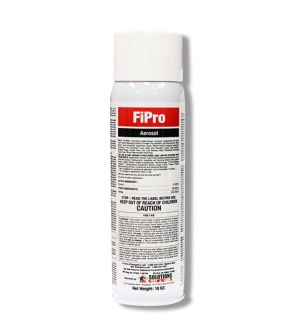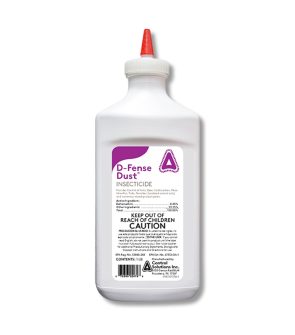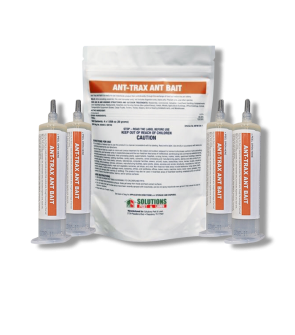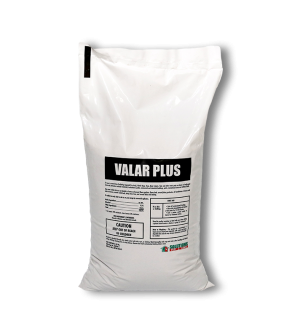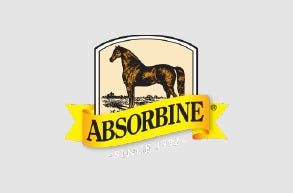Gain access to personalized product screening, the best pricing, rewards, and more!
5 Ants Most Common in The Summer
Most Effective Products
5 Ants Most Common in the Summer
This article is a general guide to controlling ants most experienced in the summer. By using the products and methods suggested, you will get control of the five most common ant species encountered during the summer months.
With summer comes warmer weather and longer, drier days. Unfortunately, it also brings out pests such as ants. The ones most commonly found in and around homes are carpenter ants, odorous house ants, little black ants, pavement ants, and imported fire ants.
These ants invade your home through the smallest crack and crevices when in search of food leaving behind a trail for other members of the colony to follow. Of course this poses a problem to homeowners food sources when ants are consistently found in grain, flour, honey, and other food items. Not to mention, these pests ability to thrive outside of your home whenever they have access to food and water.
A well-known fact about ants is their sociality with colonies ranging at least in 100 individual ants in small concealed areas or within large ant mounds. While ants are considered a nuisance mainly due to their numbers they can cause significant damages within time if not managed as well as inflict painful bites and stings.
Differentiating each common summer ant species can help homeowners quickly and effectively control indoor and outdoor ant infestations. Throughout this DIY guide you will find professional products and links to each ant species for complete, quality control.
Carpenter Ants
While some ants are a nuisance with their activities, others like the carpenter ant have the potential to cause significant structural damages to your home. These ants like to tunnel through dead and rotting wood. When fully mature, carpenter ants are 0.75 inches long with a prominent head followed by a three segmented bodies. Often these black ants are confused with termites, but can be separated by their three body segments whereas termites have a two segmented body.
Unlike termites, carpenter ant create smooth and clean tunnels absent of soil and other termite tubes. They will chew along or across the grain of wood leaving behind piles of wood shavings or frass outside of the tunnel entrance since they do not eat wood. Indoor carpenter ant infestations are often found in moist, decaying wood rotted by potential water leakage. This could be found near porch pillars, around bathtubs, and window and door frames. Decaying, moist wood outside of your home is most prone to infestation such as dead trees, stumps, logs, and wood piles.
Odorous House Ants
When squished or threatened odorous house ants can release a foul odor similar to the aroma of a rotting coconut. They are 1/16 to 1/8 inches long with a dark brown to black coloration. When disturbed these ants can quickly move raising their abdomen into the air ready to spray.
Besides of the pungent odor, these pests are difficult to control because they nest in wall voids, crevices, and other tight areas near moisture like within bathrooms under and around sinks, around toilets, plumbing, water heater, and in kitchen near appliances. If the opportunity presents itself odorous house ants will start colonies outdoors such as under yard debris, leaf litter, rocks, logs, woodpiles, mulch, and flower pots.
Little Black Ants
Despite their name, little black ants are not a type of ant species to easily be dismissed. Ranging from 1.5 mm in length or 1/16 of an inch these insects small sizes encourages them to work as a group. Worker ants defend the colony against people and other ant species with a barely visible stinger. Little black ants are mostly jet-black but can be seen as dark brown in coloration.
Often when homeowners think of ants this is the pest that most people come across within and outside of homes. When spotted, little black ants are found in extensive and long trails on sidewalks, wall voids, tool sheds, where plumbing meets walls, and in kitchens where food and water collect.
Pavement Ants
Another form of a nuisance ant is the pavement ant, which often nests within pavement cracks and homes. Pavement ants are often confused with little black ants, but they can be differentiated by their size. Pavement ants are slightly bigger than little black ants measuring at about 1/8 inches long.
Despite its size this pest is known for its ability to be aggressive towards other ant species when they feel as if the nest is threatened. Pavement ant hills appear as misplaced soil along gaps and cracks in pavement with a small indention in the middle. Other than pavements they can nest in gaps and cracks within driveways, patios, sidewalks, foundations as well as inside your home near wall voids.
Imported Fire Ants
Imported fire ants are easily known to homeowners for their painful bites and stings. In the southern half of the United States these pests are commonly found in open, sunny areas. They are aggressive insects, so be wary when examining them and their nests.
Often confused with native fire ants, these insects can be distinguished with its three-tooth like projections in front of head whereas native fire ants only have two. Antennae of imported fire ants have clubbed tips and composed of 10 segments. Bodies of adult imported fire ants are black to reddish brown head and thorax with abdomen being more darker brown.
Extremely aggressive this nuisance pests are often found outdoors near sources of moisture. Established imported fire ant mounds can be found beside or underneath sidewalks, against homes foundation, mailboxes, or trees.
Key Takeaways
Why Are Ants Most Common In Summer?
- Ants are most common in homes during the summer because there is little moisture and food found outdoors.
What Ants Are Most Common in Summer
- The most common ant species in the summer are the carpenter ant, odorous house ant, little black ants, pavement ants, and imported fire ants.
How to Get Rid of Ants in the Summer
- Depending on the ant infestation the treatment and products will vary. For odorous house ants, pavement ants, and little black ants use D-Fense Dust, Supreme IT Insecticide, and Ant-Trax. For carpenter ant control, apply Fipro Foaming Aerosol and Supreme IT Insecticide. For imported fire ant control, use Valar Plus Bifenthrin Granules and Supreme IT Insecticide.













